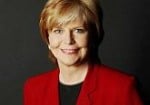Illinois Women Running for Office: HARD TO FIND
December 3, 2009
 BY CAROL MARIN Chicago Sun-Times Columnist
BY CAROL MARIN Chicago Sun-Times Columnist
Where the heck are the women? Just look at the current list of candidates running for statewide office.
For governor?
Seven Republicans, four Democrats and one Green? All men.
For lieutenant governor?
Six Republicans, six Democrats, all men.
Secretary of state? All men again.
Only Lisa Madigan, the incumbent, brings gender diversity to the race for attorney general.
For state comptroller, just two women among seven candidates: Republican Judy Baar Topinka and Green Party R. Erika Schafer.
For state treasurer, Democrat Robin Kelly is the lone female.
On the federal level, it’s just as bleak.
For U.S. Senate, out of 16 candidates, there is just one woman on the Democratic ticket, Cheryle Jackson, and one for the GOP, Kathleen Thomas.
What’s happening?
“I wish I knew the answer,” Republican political strategist Christine Dudley said Tuesday.
Dudley has been trying hard for years to recruit Republican-minded women to run for office through a program known as the Illinois Lincoln Excellence in Public Service Series, which since 1995 has graduated 165 women from its training sessions. Even so, Dudley says, “Times are tough. Our classes have gone from 18 women down to 10 because it’s been difficult to raise the money.”
Loretta Durbin, a prime mover in a parallel Democrat-oriented effort, said Tuesday that of the 100 women her Illinois Women’s Institute for Leadership has trained since 2002, 33 have run for public office.
“Women’s greatest obstacle,” she said by phone from Springfield, “is fund-raising and just becoming part of the political structure of the area they are in.”
And let’s be honest, neither the establishment Republican nor Democratic parties has made recruitment of female candidates much of a mission.
“Politics remains misogynist,” lamented Dudley.
“It’s a huge mistake by both parties,” said Pat Brady, the new head of the Illinois GOP. “We’re trying, though. We tried to recruit two women for the governor’s race, and they wouldn’t get in. They had reasons, and a lot of good ones.”
And that’s the other part of this story.
Though the grand old parties have done a lousy job of encouraging women to run, women also have shown significant reluctance to jump in, according to longtime activist and political strategist Rebecca Sive. “The women who get to the high posts have to decide early — Lisa Madigan is a good example of that — but a lot of women don’t figure that out early enough.”
For the sake of influencing policies critical to women, they had better hurry up.
Marie Wilson certainly believes that. She is the founder and president of the White House Project, a national, nonpartisan, nonprofit dedicated to advancing women’s leadership all the way up to the White House. It trains women all over the country to run for office.
Wilson argues that the gap in women’s political leadership is part of a whole system of gaps: the wage gap (women earn 78.7 cents for every dollar earned by men); the Fortune 500 gap (women occupy only 15 percent of board seats); the attorney gap (women lawyers’ salaries are $20,000 to $90,000 less than their counterparts), and the film and television gap (women are only 16 percent to 23 percent of top leadership).
Hence, the political gap.
“In politics,” according to Wilson’s White House Project, “women have lost ground in the last decade as elected statewide executive officials (including governor’s lieutenant governors, etc.) and made only small gains in Congress,” where women now constitute just 17 percent.
To read the full article, visit: http://www.suntimes.com/news/marin/1915122,CST-EDT-Carol02.article

